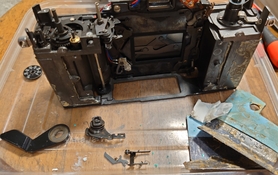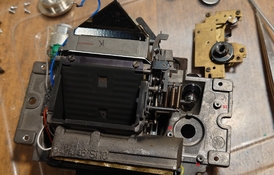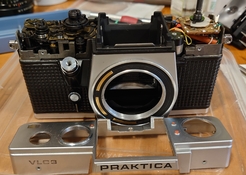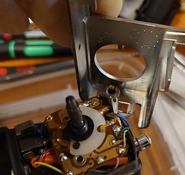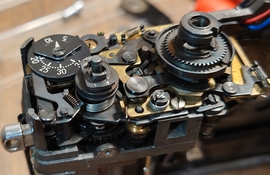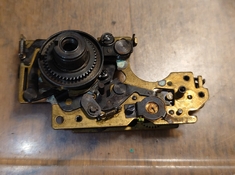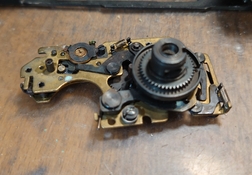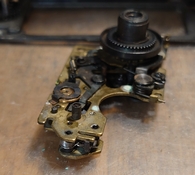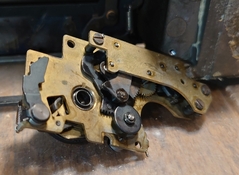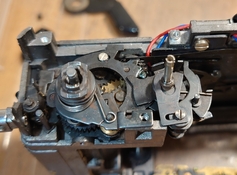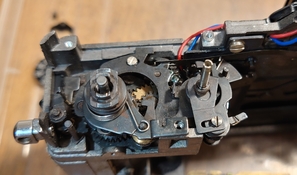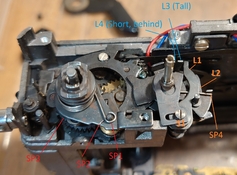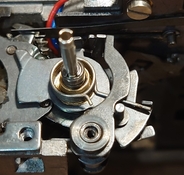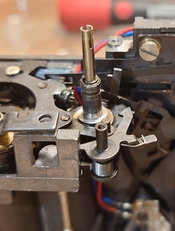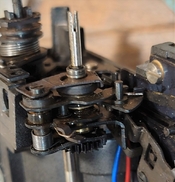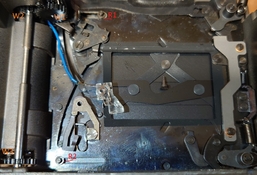Intro:
Praktica L-series cameras has a long run history, from 1960s til the fall of the Berlin wall. What makes it truly unique is not just its history background, but also the design inside. Because of export regulations and marketing strategy, there could be many names on the same models. Most of the L-series cameras share similar design with minor internal variations and that makes their parts are almost all interchangable.
Need to note the EE -series is considered as the most advanced models with Aperture Priority+ Open Ap. metering ; VLC series is the "system camera" answer to the " system " in the market with Open AP metering; PLC is similar to VLC but just without interchangable prism. These 3 core lines parts are quite unique and hard to share with other L series, but it's possible to be shared within their production line.
Only these 3 main lines can use "electric" version Pentacon or CZJ lens for Open Ap metering .
Since it has been marked as a "underpriced" camera and the production amount was so large, many users had ignored the fact it is also a very sensitive camera. Poor handling causes faults, and thus resulted these cameras ended up like trash. However most of them can be rescued.
There is a documentary with interviewing former Pentacon staff, showing another fact is the unstable supply materials sourcing causes the cameras likely to fail at random. It is true. I have seen rust spots on steel shutter blades or brass plates with no obvious cause, poor reflex from springs, thin metal pulls, and they even glued the prism on top of the focusing screen frame.
I am writing this topic because I afraid I might forget in one day, and I hope my info can help those who are looking for tips or hints in servicing their own cameras. There are too many stupid videos doing ignorant things on the internet that are for ads or the makers click rate-profit. As I (and also other places with real pros ) mentioned many times, to service a camera needs correct tools. Make sure you have the correct tools for the correct works, even though you will later find Praktica just need few spanner wrenches, slotter screwdrivers, pillers and soldering iron ( small tip). Always remember: right tools for the right job.
(TBC)
Praktica L-series cameras has a long run history, from 1960s til the fall of the Berlin wall. What makes it truly unique is not just its history background, but also the design inside. Because of export regulations and marketing strategy, there could be many names on the same models. Most of the L-series cameras share similar design with minor internal variations and that makes their parts are almost all interchangable.
Need to note the EE -series is considered as the most advanced models with Aperture Priority+ Open Ap. metering ; VLC series is the "system camera" answer to the " system " in the market with Open AP metering; PLC is similar to VLC but just without interchangable prism. These 3 core lines parts are quite unique and hard to share with other L series, but it's possible to be shared within their production line.
Only these 3 main lines can use "electric" version Pentacon or CZJ lens for Open Ap metering .
Since it has been marked as a "underpriced" camera and the production amount was so large, many users had ignored the fact it is also a very sensitive camera. Poor handling causes faults, and thus resulted these cameras ended up like trash. However most of them can be rescued.
There is a documentary with interviewing former Pentacon staff, showing another fact is the unstable supply materials sourcing causes the cameras likely to fail at random. It is true. I have seen rust spots on steel shutter blades or brass plates with no obvious cause, poor reflex from springs, thin metal pulls, and they even glued the prism on top of the focusing screen frame.

I am writing this topic because I afraid I might forget in one day, and I hope my info can help those who are looking for tips or hints in servicing their own cameras. There are too many stupid videos doing ignorant things on the internet that are for ads or the makers click rate-profit. As I (and also other places with real pros ) mentioned many times, to service a camera needs correct tools. Make sure you have the correct tools for the correct works, even though you will later find Praktica just need few spanner wrenches, slotter screwdrivers, pillers and soldering iron ( small tip). Always remember: right tools for the right job.
(TBC)
Last edited:



